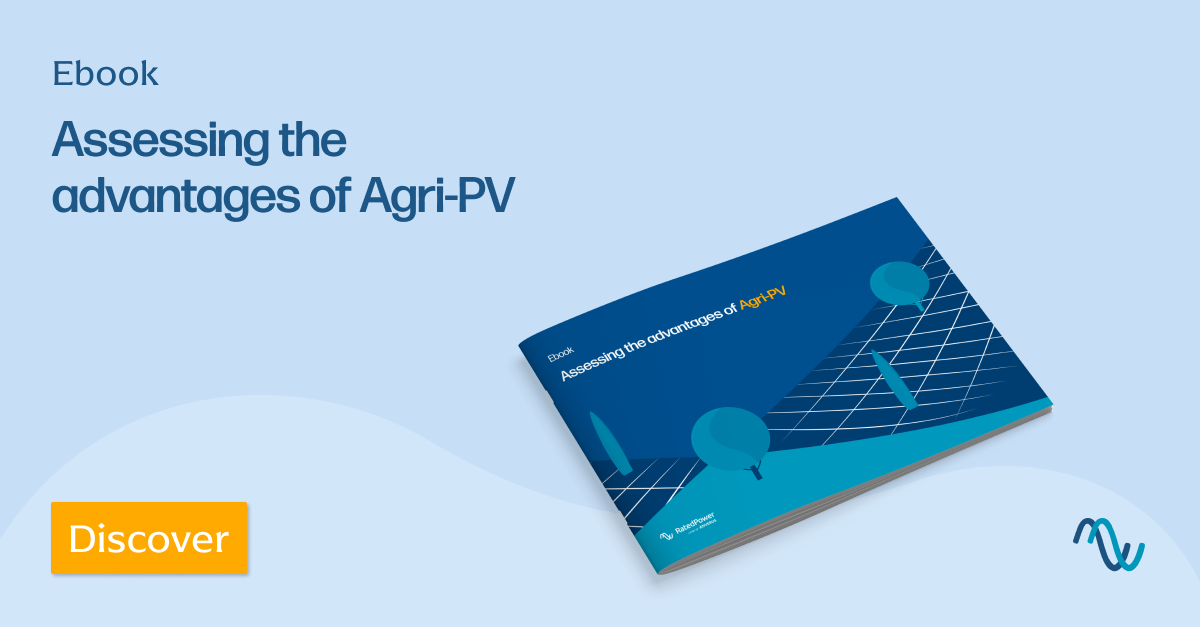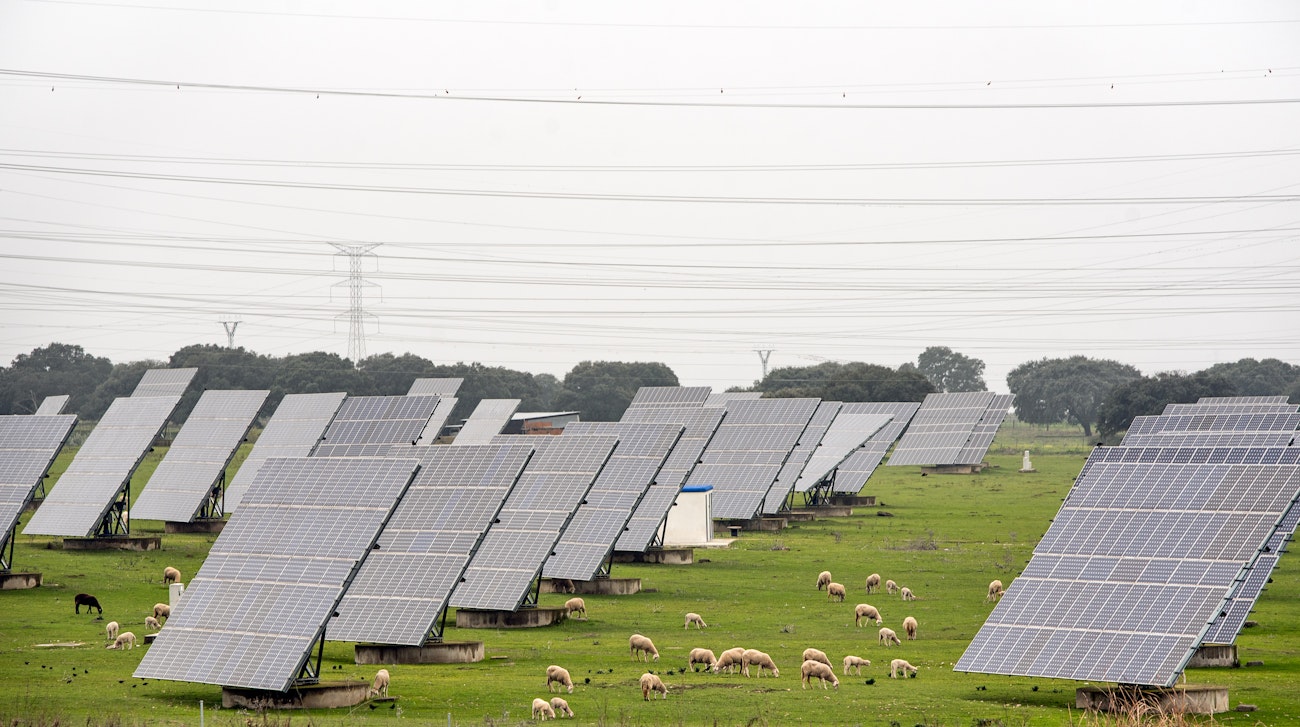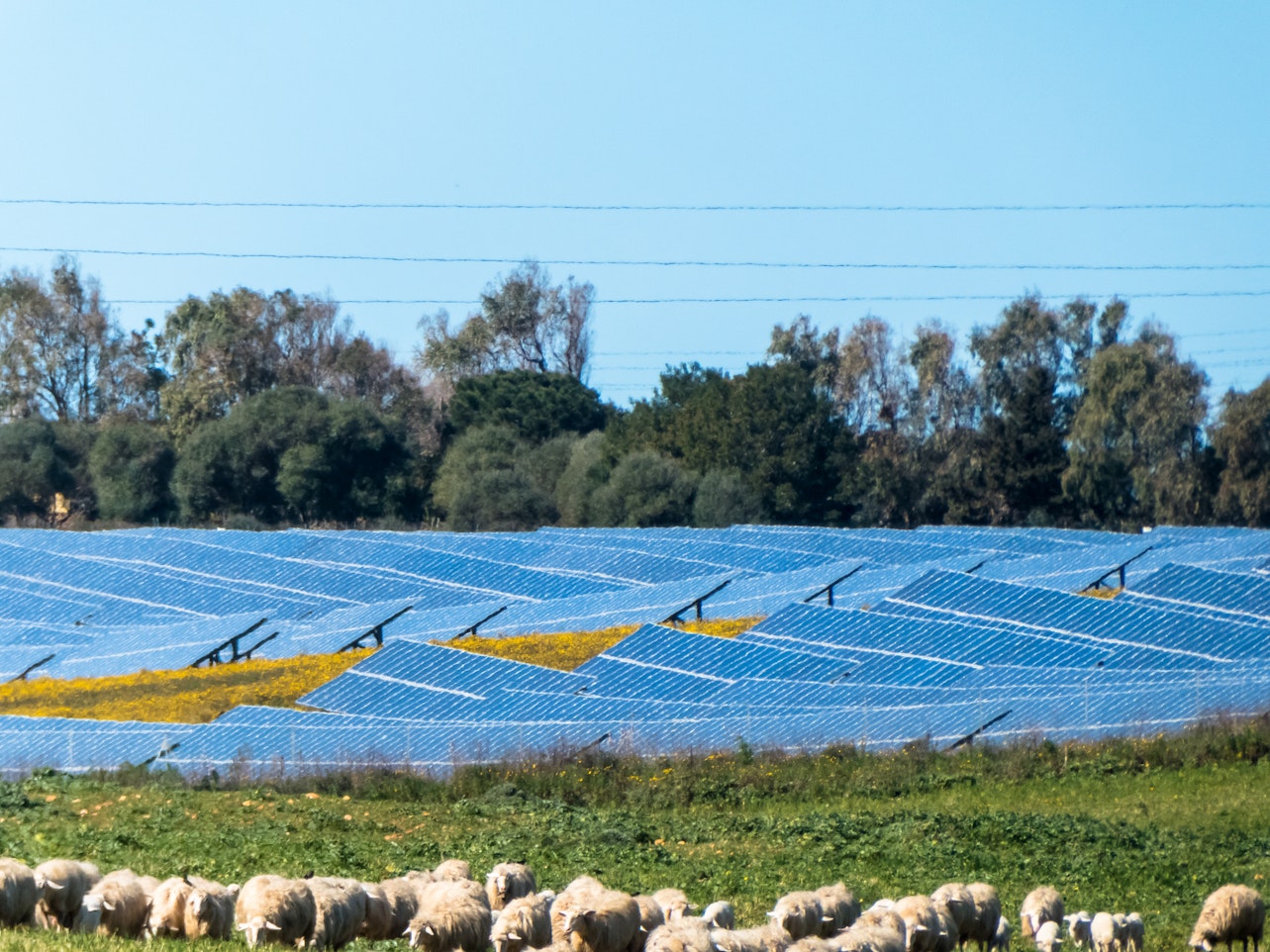- Solar energy blog
- The Rise of Agri-PV
The Rise of Agri-PV
We recently produced an eBook on the rise of Agrivoltaics (agri-PV). The complete eBook is ready to download here!
In this blog, we'll provide an overview of agri-PV, its benefits, and why it holds immense promise for the future of renewable energy.


Faten Driss
Technical Advisor
Faten is a renewable energy engineer, currently working at RatedPower as Technical Advisor. She has a thorough understanding of RatedPower’s pvDesign, the digital solution to reduce LCOE and maximize productivity for utility-scale PV plants.
What is Agri-PV?
Agri-PV involves the co-location of solar photovoltaic panels with agricultural activities on the same area of land. Unlike traditional solar installations that require dedicated land, agri-PV systems utilize the space between solar panels for growing crops or raising livestock.
This dual-use approach maximizes land efficiency and productivity while simultaneously generating renewable energy.
Learn all about Agri-PV, its benefits, the technical challenges and how to overcome them with our free ebook.

Discover the benefits of Agri PV systems and understand the technical challenges involved and explore strategies to overcome them. Gain insights into the promising future of this technology. Download this ebook now!
Benefits of Agri-PV
So, what sets agri-PV apart from traditional solar installations? Let's look at some of the benefits associated with this form of solar and why they make it an appealing choice to help push towards a green future.
Efficient land use
One of the most significant advantages of agri-PV is its ability to optimize land use. By harnessing sunlight for both green electricity generation and agricultural production, agrivoltaic systems make efficient use of available land resources. This is particularly valuable in densely populated areas where land scarcity poses a challenge for both agriculture and solar development.
Additionally, with the sheer volume of agricultural land available, agri-PV presents an opportunity for considerable increases in installed solar capacity. If just 1% of the available farmland in Europe were developed with agri-PV installations, the EU would see an increase of 700 GW of installed capacity.
Agricultural resilience
Combining agriculture with solar energy production can enhance agricultural resilience. The partial shading provided by solar panels can mitigate extreme weather conditions, such as excessive heat or heavy rainfall, which can be detrimental to crops.
In addition, the microclimate created beneath solar panels can reduce evaporation and help conserve water, making it particularly beneficial for drought-prone regions or those with frequent high temperatures. Agriculture accounts for roughly 70% of freshwater use around the world, so reducing this by any amount will help offset the effects of climate change and ensure more people have access to clean, fresh water, all while lowering agricultural costs.
Economic benefits
Agri-PV offers a compelling economic proposition for farmers and landowners. By diversifying income streams through both agricultural and renewable energy production, agrivoltaic systems can increase overall revenue potential. Excess solar power generated can be sold back to the grid or used to power agricultural operations, lowering energy costs.
The reduced need for separate land parcels for agriculture and solar installations can also lower land acquisition costs and enhance the financial feasibility of renewable energy projects.
Combating climate change
It might seem obvious, but the climate benefits of agri-PV can't be overlooked. Like traditional solar photovoltaic systems, agri-PV helps mitigate greenhouse gas emissions and combat climate change by displacing fossil fuel-based electricity generation.
Food-energy interplay
Agriculture uses approximately 30% of the energy generated worldwide, meaning a reliable energy supply is crucial for securing our food chain. By integrating solar energy generation with agricultural practices, agri-PV systems foster synergies between these traditionally separate sectors, paving the way for holistic approaches to resilient and sustainable development.
If you're interested in learning about the renewable energy trends according to industry professionals, check out our "2024 Renewable Energy & Solar Research Report".

Looking to the future
Let's explore how and why agri-PV presents such a promise for transforming the future of solar energy.
The renewable energy transition
When it comes to the transition to a renewable future, agri-PV offers benefits on two fronts. By harnessing abundant solar energy while preserving agricultural land for food production, agri-PV also provides a sustainable alternative to conventional fossil fuel-based electricity generation in one of our most energy-intensive industries.
Sustainable Agriculture
Alongside mitigating climate change, one of the primary goals of the green energy transition is to create sustainable, resilient practices for the future. In the face of growing population pressures and environmental degradation, sustainable agriculture practices are essential for ensuring food security and preserving natural resources.
Agri-PV promotes sustainable land management by enabling simultaneous agricultural production and renewable energy generation, thereby contributing to the resilience and productivity of agricultural systems.
Rural development
The adoption of agri-PV can spur rural development by creating new economic opportunities and enhancing energy access in rural areas. By empowering farmers to participate in renewable energy generation, agri-PV contributes to local economic development, job creation, and energy self-sufficiency.
One study into the use of agri-PV installations in low- to middle-income countries conducted in Indonesia found that, alongside producing electricity, agri-PV systems can provide co-benefits to these communities, including "rural electrification, retrofitting diesel electricity generation, and providing electricity for local processing of agricultural products."
Climate resilience
As climate change exacerbates extreme weather and agricultural vulnerabilities, an agri-PV system offers a climate-resilient solution that can help farmers adapt to changing conditions. Integrating solar panels with agricultural activities provides built-in resilience against climate-related risks, such as heatwaves, droughts, and heavy precipitation events.

Upcoming projects
Agri-PV isn't just a theoretical — it's a reality. As of 2021, there was roughly 14 GW of installed agri-PV capacity worldwide, which looks set to increase over the coming years.
According to a new report, Germany has the potential to add up to 1 GW of agri-PV capacity by 2025. Germany currently has roughly 14 MW of installed agri-PV capacity, but government projects could boost this total in the near future.
In the Netherlands, one of the largest agri-PV projects in Europe has been announced at a fruit farm in Babberich after a successful pilot. The installation will contain 10,250 solar panels with a capacity of 2.67 MW.
There has also been a significant installation commissioned in Sicily. Planned to span 115 hectares of agricultural land between Marsala and Mazara del Vallo, the installation will have a capacity of 66 MW upon its completion.
It is clear that agri-PV holds substantial promise for the green energy transition. If you'd like more information about agri-PV, make sure to download our full eBook on the topic. For more insights and news into the renewable energy sector, explore the rest of the RatedPower blog today!
Latest stories
Related posts
Technology and engineering
Solar Power Technologies that rocked it in 2022
28 Oct, 21 | Updated 14 Nov, 22

Technology and engineering
Learn PV substation engineering and design automation with RatedPower
Do you know why and how a solar farm connects to the grid? RatedPower automatically generates the best solution for an interconnection facility and chooses between a switching and breaking station, a line to transformer substation or a single/double busbar substations.
2 Dec, 21

Market analysis
Breaking down solar farm costs: Free template inside
4 May, 21 | Updated 27 Sep, 21

- RatedPower
- Solar energy blog
- The Rise of Agri-PV


